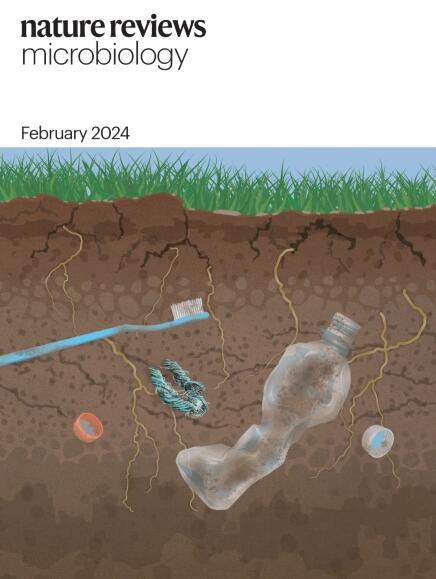微生物硫代谢的多样性和生态学
IF 103.3
1区 生物学
Q1 MICROBIOLOGY
引用次数: 0
摘要
硫在大气层、岩石圈、土壤圈、水圈和生物圈的相互作用以及生物体的运作中发挥着举足轻重的作用。在地壳、地幔和大气层中,由于自然和人为因素,硫发生了地球化学转化。在生物圈中,硫参与氨基酸、蛋白质、辅酶和维生素的形成。生物圈中的微生物通过氧化、还原和歧化反应,对硫化合物的循环至关重要,促进其生物同化和能量生成。无论是在有氧环境还是厌氧环境中,微生物的硫代谢都非常丰富,并且与碳、氮和铁等重要元素的生物地球化学循环相互关联。通过新陈代谢、竞争或合作,代谢硫的微生物可以推动有机碳的消耗、固定氮的损失和气候活性气体的产生。鉴于硫代谢在环境改变中的重要性与日俱增,以及微生物在硫动力学中错综复杂的参与,及时重新评估硫循环势在必行。本综述探讨了我们对微生物硫代谢的理解,主要侧重于无机硫的转化。我们全面概述了地球上瞬息万变的生态系统中的硫循环,强调了不同环境、生态系统和微生物群中微生物介导的硫转化反应的重要性。本文章由计算机程序翻译,如有差异,请以英文原文为准。


Diversity and ecology of microbial sulfur metabolism
Sulfur plays a pivotal role in interactions within the atmosphere, lithosphere, pedosphere, hydrosphere and biosphere, and the functioning of living organisms. In the Earth’s crust, mantle, and atmosphere, sulfur undergoes geochemical transformations due to natural and anthropogenic factors. In the biosphere, sulfur participates in the formation of amino acids, proteins, coenzymes and vitamins. Microorganisms in the biosphere are crucial for cycling sulfur compounds through oxidation, reduction and disproportionation reactions, facilitating their bioassimilation and energy generation. Microbial sulfur metabolism is abundant in both aerobic and anaerobic environments and is interconnected with biogeochemical cycles of important elements such as carbon, nitrogen and iron. Through metabolism, competition or cooperation, microorganisms metabolizing sulfur can drive the consumption of organic carbon, loss of fixed nitrogen and production of climate-active gases. Given the increasing significance of sulfur metabolism in environmental alteration and the intricate involvement of microorganisms in sulfur dynamics, a timely re-evaluation of the sulfur cycle is imperative. This Review explores our understanding of microbial sulfur metabolism, primarily focusing on the transformations of inorganic sulfur. We comprehensively overview the sulfur cycle in the face of rapidly changing ecosystems on Earth, highlighting the importance of microbially-mediated sulfur transformation reactions across different environments, ecosystems and microbiomes. In this Review, Zhou, Tran et al. provide a comprehensive overview of the metabolic reactions by which microorganisms transform inorganic sulfur compounds across varied microbiomes and ecosystems, and explore the link between sulfur cycling microorganisms and climate change.
求助全文
通过发布文献求助,成功后即可免费获取论文全文。
去求助
来源期刊

Nature Reviews Microbiology
生物-微生物学
CiteScore
74.00
自引率
0.50%
发文量
149
审稿时长
6-12 weeks
期刊介绍:
At Nature Reviews Microbiology, our goal is to become the leading source of reviews and commentaries for the scientific community we cater to. We are dedicated to publishing articles that are not only authoritative but also easily accessible, supplementing them with clear and concise figures, tables, and other visual aids. Our objective is to offer an unparalleled service to authors, referees, and readers, and we continuously strive to maximize the usefulness and impact of each article we publish. With a focus on Reviews, Perspectives, and Comments spanning the entire field of microbiology, our wide scope ensures that the work we feature reaches the widest possible audience.
 求助内容:
求助内容: 应助结果提醒方式:
应助结果提醒方式:


